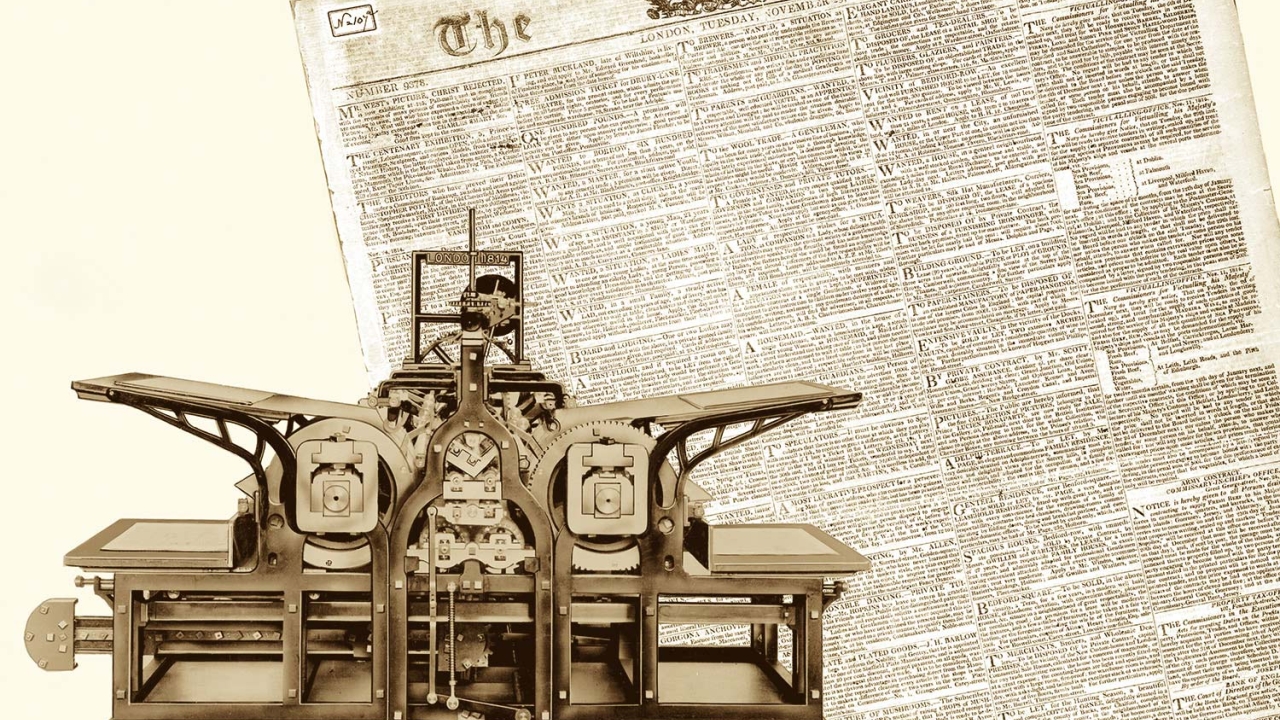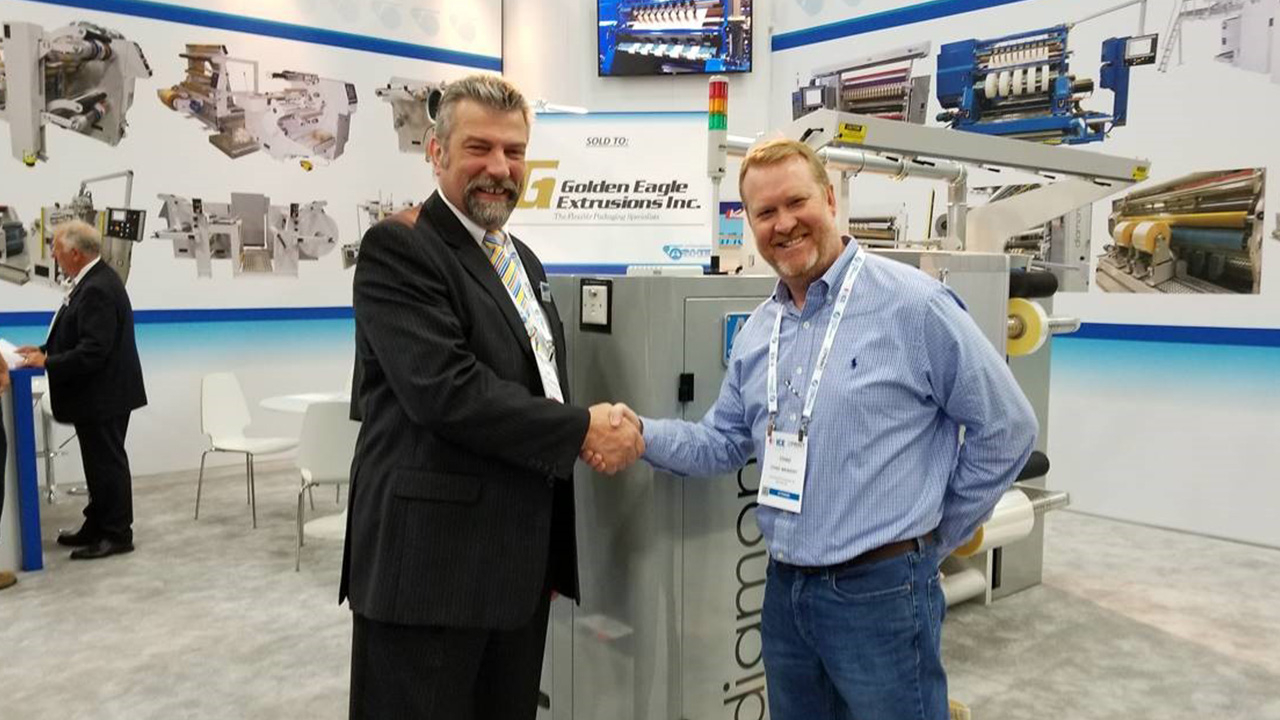KBA reaches 200

The world's first press-building workshop, established in 1817, has grown into a globally successful manufacturing group with a portfolio of products for the printing industry. Anniversary festivities are planned from September 21-23, providing an opportunity to look back at the company’s past achievements and present its future, strategy and market position in the third century of its history.
Breakthrough in London
In the early 19th Century, Germany lacked investors and a fertile industrial environment, leading trained printer and inventor Friedrich Koenig to travel to London in 1807 to realize his idea of a steam-driven printing press. While there, he met precision engineer Andreas Bauer, and in November 1814, The Times became the first newspaper to be printed on their double-cylinder press. This laid the foundations for printing on an industrial scale and for access to print media for a much broader section of the population.
Production in a former monastery
On August 9, 1817, Friedrich Koenig and Andreas Bauer signed a contract establishing Schnellpressenfabrik Koenig & Bauer in a secularized monastery in Oberzell near Würzburg, and in 1823, the Haude und Spenersche Zeitung in Berlin was the first newspaper on the European continent to be printed on presses from Oberzell.
Friedrich Koenig died in 1833, but is widow, Fanny Koenig, and business partner Andreas Bauer continued his work. New presses were developed and the 100th press was delivered in 1838. The company's foundation period came to an end with the death of Andreas Bauer in 1860, although a number of workers moved away to found their own businesses, meaning Oberzell can be considered the cradle of German printing press manufacturing.
Early social achievements
The founder’s two sons, Wilhelm Koenig and Friedrich Koenig Jr, developed new presses, modernized factory routines and introduced a series of social reforms. The sickness benefit fund founded in 1855 was followed by a factory savings bank in 1865, and by a factory training school, the precursor of today's vocational training centre in Würzburg, in 1868. The factory statute of 1873 defined the rights and duties of workers and managers and established a factory council.
The era of web printing begins
The first web-fed press was supplied to a newspaper printer in Magdeburg in 1876. Wilhelm Koenig invented the variable web press in 1886, designed the first 4-color press in 1888, and began building special machines for the printing of luxury products. At the same time, he became very interested in securities printing, a field in which KBA was later to become technology leader. In 1895, the 5000th cylinder press left the factory.
From 1895 through into the 1920s, the course of the company was shaped by Constantin Koenig and the founder's grandson Albrecht Bolza. In 1901, a new factory was built at the site today occupied by the company headquarters. The 225m-long production hall was one of the largest in Germany at that time. Web-fed publication and rotogravure presses were manufactured, and the development of sheet-fed machines was stepped up. Alongside printing presses, various matrix-moulding presses and plate-casting machines were delivered to customers all over the world.
Destruction and rebuilding
After the First World War, Dr Hans Bolza, a great-grandson of Friedrich Koenig, made a notable contribution to the mending of severed foreign business links. He was appointed to the executive board of the company when it was transformed into a limited company in 1920 and served as chairman of the board from 1931 to 1971. KBA survived the period of hyperinflation in the 1920s with the newly developed Iris collect press for colored banknotes.
In March 1945, bombs and artillery shells destroyed the Würzburg factories. Reconstruction began in 1946, and after the post-war currency reform, KBA resumed business in 1949 with nominal capital amounting to 4.1 million Deutsche Mark.
Success story of security printing
Cooperation with securities printing expert Gualtiero Giori began in 1952, coupled with the arrival of a young design engineer, Dr Hans-Bernhard Schünemann, the son of a Bremen publishing family, in 1951, signalled the company’s progress in security printing. The first of over 250 patents was granted for a modification of the so called Maltese cross drive mechanism, which was subsequently used in another invention, the sheet-fed gravure press Rembrandt MT III. In 1959, Dr Hans Bolza formally adopted Dr Schünemann.
Dr Bolza-Schünemann was himself president of KBA for almost 25 years from 1971 to 1995, and initiated the formation of the KBA Group from 1990. Executive responsibility was subsequently placed in the hands of his close partner and long-serving financial director Reinhart Siewert. After the turn of the century, he was succeeded by Albrecht (2003-2009) and Claus Bolza-Schünemann (since 2011), who thus represent the sixth generation of the founding family at the helm of the company.
Successful presses Condor and Rotafolio
Despite growing offset competition in the 1960s and 1970s, KBA retained the proven letterpress technology for its sheet-fed and web-fed presses. Alongside the Rembrandt sheet-fed gravure press and banknote presses developed together with De La Rue Giori, the Condor and Rotafolio sheet-fed press for wrap-around plates were successful all over the world.
High-performance in sheet-fed offset since 1974
The first sheet-fed offset press, the half-format Koebau-Rapida 0, was presented at drupa in 1967. The medium format Koebau-Rapida III followed in 1969. Both ran at speeds up to 8,000sph. The Koebau-Rapida SR III launched in 1974 was almost twice as fast at 15,000sph.
In 1986, Koenig & Bauer launched the Rapida 104, a unit-type press designed for high flexibility and printing speeds up 15,000sph. Production was transferred to the new subsidiary KBA-Planeta AG in 1992, sowing the seed for today’s high-performance sheet-fed offset presses from Radebeul. The current Rapida 106, for example, has defined the benchmarks in medium format with speeds up to 20,000sph, extremely fast job changeovers and configurations comprising up to 19 printing and finishing units.
Today’s large format series Rapida 145 and 164 are the successors to the Rapida 142 and 162 presses which were developed jointly by the Radebeul design engineers and their colleagues from Würzburg in the 1990s. And in 2003, the Rapida 205 was unveiled as the world's largest sheet-fed offset press.
Pioneer of new technologies
In the same way that the Würzburg engineers ventured new approaches to web-fed printing, the Saxon designers have repeatedly struck out on their own in search of simpler and more efficient sheet-fed technology. Two examples are the DI offset press, 74 Karat with direct on-press plate imaging, which was developed together with Scitex from Israel in 1997, and its sister press, Rapida 74 G, from 2000. Both were equipped with short-train inking units for waterless printing.
Innovation continues, from in-line finishing and direct printing on corrugated board, to UV LED drying. Entry into the post-press market in 2016 and the development of the digital sheet-fed press VariJET 106 open up further prospects for the future.
World first in web-fed printing
The era of web offset presses from Würzburg began with the Commander in 1969. Over time, the still dominant satellite design principle was becoming increasingly complex. At the beginning of the 1990s, this trend was answered with the four-high tower presses, Journal and Colora. Later, they were joined by the single-width series Comet and Continent. The less expensive four-high tower design appealed to many new international customers, and helped to establish the company as the number one in newspaper printing.
At drupa 1995, Anilox-Express was shown with automatic plate changing and an imprinter with Scitex inkjet heads in the superstructure. It was shown adding a variable digital caricature to each offset copy. It was a further 18 years, however, before the inkjet technology was actually used in practice in web-fed offset presses.
At drupa 2000, a new trend towards compact highly automated newspaper presses was heralded by the KBA Cortina, which stood less than four meters high. Further features new to newspaper offset were the elimination of dampening units, four-high towers which glided apart for easy access, dedicated drives for each cylinder and the ease of operation with lifts to the upper couples of the tower. The same concept was implemented by the wet offset counterpart Commander CT in 2007.
Media upheavals and realignment
Already in the early 1990s, the worldwide web was taking its first tentative steps and new digital competitors entered the print arena. Faced with growing online competition, and especially due to the world financial crisis, the market for new web-fed offset presses collapsed dramatically in 2008. KBA responded by turning its attention to the digital process from 2011, and presented its first inkjet web press, the RotaJET 76, at drupa 2012. Today, with the RotaJET VL series for decor printing and the T1100 S manufactured on behalf of HP for the production of corrugated packaging, the largest digital web presses in the world are produced in Würzburg.
Early diversification
KBA went public in 1985. The acquisition of Albert-Frankenthal AG and of a majority stake in Planeta Druckmaschinenwerke in the early 1990s established a company group with a turnover of more than 1.1 billion Deutsche Mark. From the turn of the century onwards, the group management started a programme of diversification into market segments less affected by changes in the media landscape.
The acquisition of Swiss partner De La Rue Giori in Lausanne in 2001 secured KBA’s position in banknote printing. The purchase of Metronic in 2004 opened the door to the market for industrial coding systems. The acquisitions of Bauer + Kunzi and LTG Print Systems, and the subsequent merger into KBA-MetalPrint in 2006, established KBA as the number one in metal decorating. And with KBA-Kammann as a global leader for the decoration of glass containers, alongside flexible packaging specialist KBA-Flexotecnica, KBA has since 2013 further expanded its portfolio for the diverse packaging segment. A similar purpose was served by the takeover of Spanish die-cutter manufacturer Iberica in 2016.
This early diversification has helped KBA handle structural upheavals in the print industry. At the turn of the century, 60 percent of turnover from new press sales was still generated in market segments under pressure from the online media. Today, 90 percent is accounted for by the growth markets of digital and package printing, and securities printing.
Print technologies for every eventuality
Through market-oriented capacity realignment, the introduction of a new group structure and a focus on future-oriented markets, structural changes implemented in 2014 and 2015 have prepared the oldest press manufacturer in the world to meet the challenges of advancing digitization and globalization.
Today, analog and digital KBA technologies are used to print, finish and process products such as banknotes, metal cans, books, brochures, displays, decor, labels, glass and plastic containers, board and film packaging, catalogs, laminates, magazines, tires, cables, smart cards, advertising flyers, newspapers and more. Practically all common printing and finishing technologies are involved, and KBA said this diversity creates ‘unique know-how’, and continues to drive innovations, new applications and new partnerships.
Stay up to date
Subscribe to the free Label News newsletter and receive the latest content every week. We'll never share your email address.


